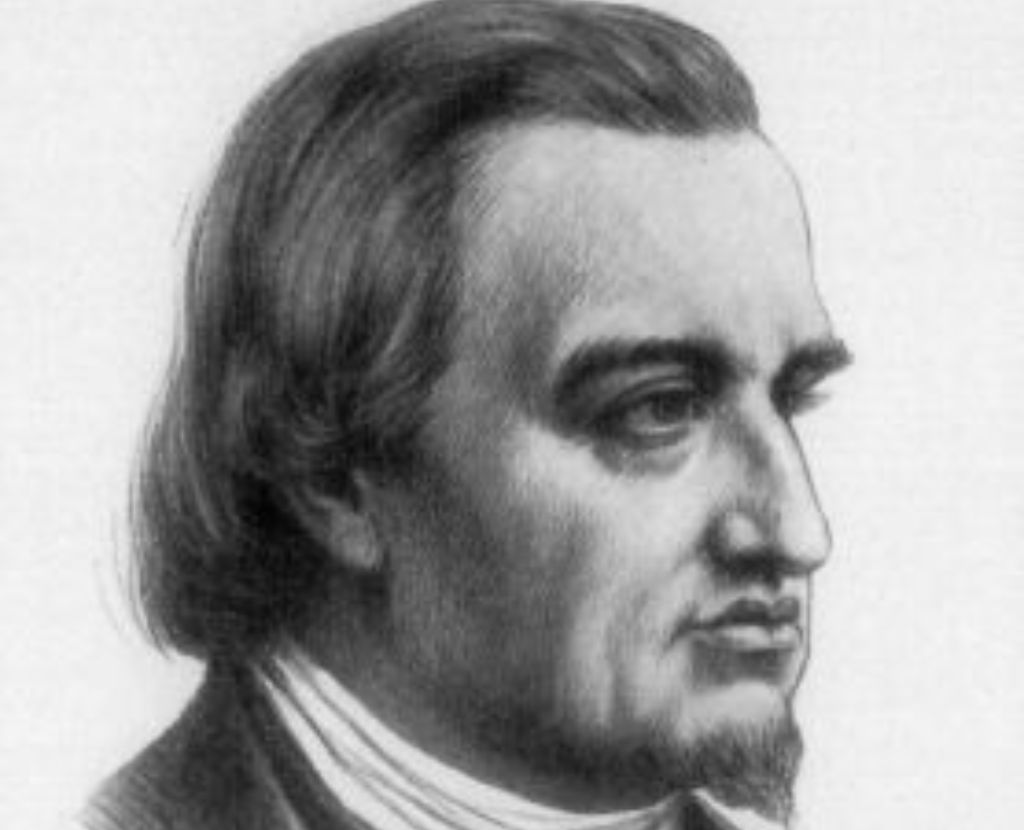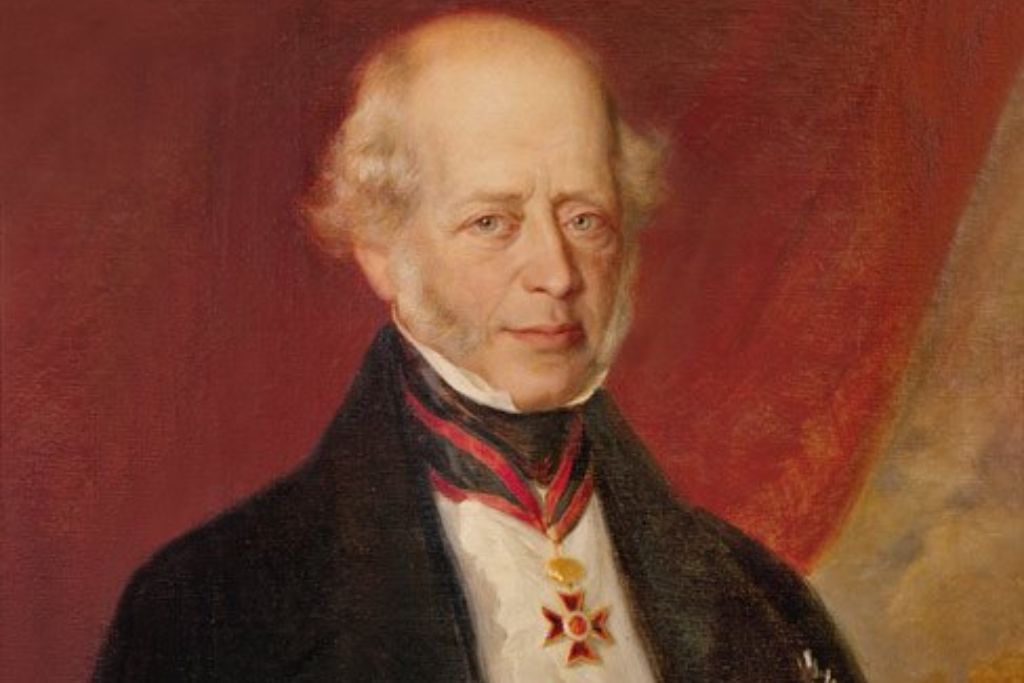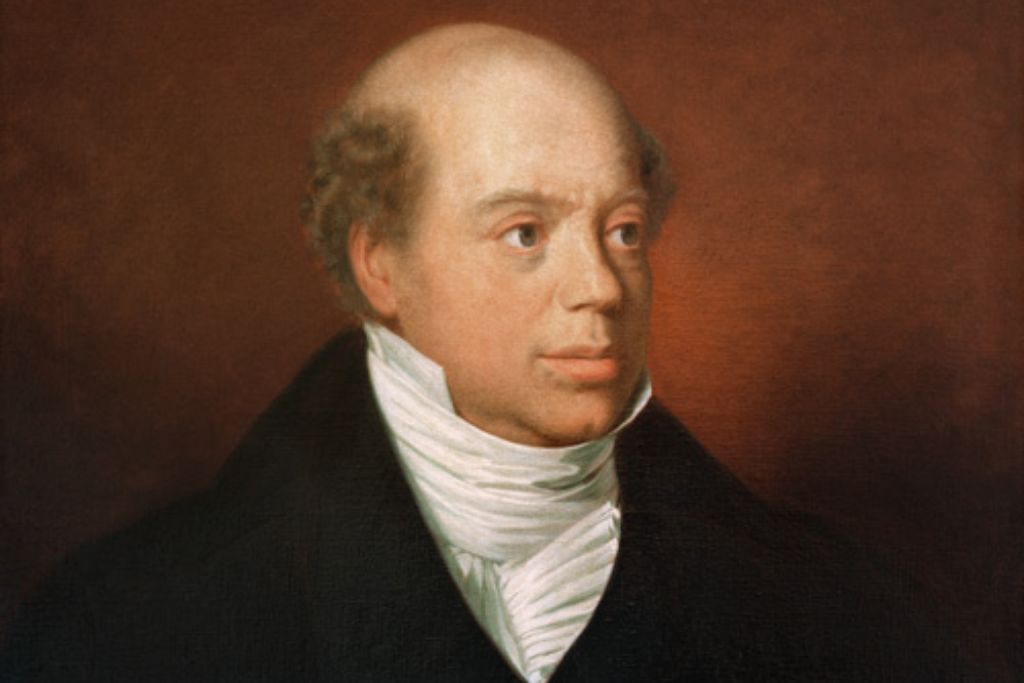
Today, the Rothschild banking family is arguably one of the most famous (or infamous) families on Earth. Whilst there are several branches of the family, they can all trace their heritage back to one man: Mayer Amschel Rothschild.
Although he never lived to see his family become one of the richest families on Earth, many of the principles Mayer Amschel Rothschild would go on to help ensure the family remained extremely wealthy even after two world wars and the nationalization of many of their businesses!
Early Life
Mayer’s first known ancestor was Isaak Elchanan Rothschild (usually just Elchanan Rothschild), who likely moved to the Frankfurt ghetto shortly after its construction in 1567. Sadly, not much else is known about other than he had a wealth of 2,700 guilders in 1558.
After settling in the Frankfurt Judengasse (ghetto), he became the first known ancestor of Mayer Amschel Rothschild to use the name zum rothen Schild (meaning “at the red shield” in Old German), as houses in the ghetto used pictorial names rather than names/numbers.
Over the 200 years or so, the zum rothen Schilds changed their name to Rothschild, and began working in the area of finance (as many other Jewish families did at the time, due to various laws put in place by the church).
It is here, in 1744, where Mayer Amschel Rothschild would be born as one of eight children to Amschel Moses Rothschild, a Jewish money changer and silk trader, and his wife, Schönche Rothschild, who still lived in the Frankfurt ghetto as Amschel’s ancestor, Isaak, did.
Growing up, it’s said that Mayer was quite studious, having been sent to the Frankfurt cheder – a Jewish elementary school to learn Hebrew and the basic teachings of Judaism – at a young age.
In fact, Mayer was so studious that his parents managed to sent him to the prestigious yeshiva in Fürth, but was forced to quit after a smallpox epidemic in 1755, killed both of his parents, leaving the family business in ruins.
Mayer older brothers would subsequently take the business over.
Becoming a Banker
As an eleven year-old, a young Mayer Amschel Rothschild had not yet been taught how be a successful trader and money exchanger by his father, meaning that Mayer couldn’t have joined the family business, even if he wanted to.
Two years later, through family connections, a thirteen year-old Mayer was able to secure an apprenticeship with Jacob Wolf Oppenheimer, the grandson of famed Ashkenazi Jewish banker, Samuel Oppenheimer, in the city of Hanover.
Here, Oppenheimer would teach Mayer the finer points of money changing (essentially the precursor to modern banking), with Rothschild soon becoming an extremely skilled money changer.
Whilst based in Hanover, in the Electorate of Hanover, the Oppenheimer’s bank would trade internationally, not only between other German states inside the Holy Roman Empire, but also other European countries in its entirety.
Owing to this, Oppenheimer would also teach Mayer the finer points of international trade, which ensured that he’d be a successful money changer on the international stage too!
It was here where Oppenheimer would introduce Mayer to the world of rare coin collecting – a hobby among the landed gentry and nobility of Europe at the time, which Mayer similarly became quite good at.
Return to Frankfurt
After six years as Oppenheimer’s apprentice, a nineteen year-old Mayer would return to Frankfurt to join the family business alongside his brothers.
Whilst Mayer’s brothers would run the banking aspect of the business, Mayer focused on becoming a rare coin dealer, amassing a large collection of Ancient Greek, Roman and Persian coins, which he’d trade with the Holy Roman Empire’s elite.
In a matter of months, Mayer had gone from trading rare coins with prosperous farmers and landowners, to many in the nobility. A few months after that, Mayer was dealing with the dukes and princes of the Holy Roman Empire.

It was through this, that Mayer would meet and befriend Prince Wilhelm IX of Hesse in the mid-1760’s. Despite the great distance (for the time), Wilhelm would acquire hundreds of coins from Mayer, netting him millions in today’s money!
Although largely focusing on his coin business, Mayer made sure to keep in touch with the day-to-day operations of the banking side of the family business, controlled by his older brothers. This ensured he would never become a liability to the family.
Seven years after his return to Frankfurt, in 1770, Mayer Amschel Rothschild would marry Guttle Schnapper, the daughter of another Frankfurt ghetto-based money changer and former court Jew.
“Court Jew”
Despite having known Mayer for many years, Prince Wilhelm and Mayer were simply friends. Mayer found and supplied the prince with the rare coins he wanted, and the prince paid Mayer handsomely for his efforts.
However, in 1769, Wilhelm began to search for a talented money man who could oversee the day-to-day operations of his estate, as well as being able to collect his tax more efficiently.
Seeing Rothschild’s unique position as both a banker (money changer) and coin dealer, Wilhelm offered to make Mayer Amschel Rothschild his court Jew (otherwise known as a court factor, or Hoffaktor in German).
Whilst somewhat odd today, the concept of a court Jew was quite common among the ruling houses of Europe. Here, the Jews had been successful bankers and financiers for centuries, with them seemingly to be hereditarily great with money.
As a court Jew, they would be 100% in charge of that ruler’s money, often investing it so that it increased their already considerable wealth.
In exchange for their services, these court Jews would be given a pre-decided percentage of the profits or noble titles, or in rare cases, both!
Although initially hesitant, Mayer Amschel Rothschild would agree later that same year, moving to Hesse and becoming the prince’s court Jew, becoming the first Rothschild to be a ruler’s private banker…
French Revolution And Napoleon
In 1775, the Thirteen Colonies began what is now known as the Revolutionary War against the British. In an attempt to quell the rebellion, the British hired Hessian mercenaries to bolster their ranks.
As the prince’s court Jew, Mayer would oversee the transaction, being paid billions of pounds in today’s money for Hessian troops who would comprise one-quarter of the troops Britain deployed during the war.
As the court Jew, Mayer himself would receive a healthy cut of the money the British paid for these mercenaries.
Fourteen years later, in 1789, the French would have their own revolution, overthrowing and later beheading King Louis XVI. After several changes of leadership, Napoleon would declare himself the first consul of France thus starting the Napoleonic Wars.
In 1806, Napoleon would invade Hesse, as Prince Wilhelm had publicly announced support for France’s enemy, Prussia. Here, Napoleon would defeat the Hessian troops and deposing Wilhelm, who went into exile in the Duchy of Holstein.
To protect his lord’s money, Mayer Amschel Rothschild skillfully expatriated Wilhelm’s money to London, where he’d continue to invest it on behalf of the prince (with the prince’s consent of course).
Following Napoleon’s defeat in 1813, Wilhelm was restored to the throne, and Mayer brought the prince’s money back to Hesse, having grown the money considerably.
In fact, Mayer Amschel Rothschild made so much money from this ordeal, that he was able to start loaning his own money out to other European nobles under his own name, something all five of his sons would later continue to great success!
Founding a Dynasty
Mayer Amschel Rothschild would have a total of ten children with his wife Guttle, five sons and five daughters. As a savvy businessman, Mayer recognized that his children, particularly his sons, could build on what he had built.
To this end, Mayer taught his five sons everything he knew about banking, before sending them to the five major European financial capitals at the time, with each of them establishing a branch of the family, allowing the five sons to effectively control the finances of Europe.
Mayer’s oldest son, Amschel Rothschild, would stay in Frankfurt, continuing to run the Rothschild bank out of the Frankfurt ghetto before leaving the ghetto for a palace he had built in a neighboring town.
Mayer’s second oldest son, Salomon, would go to Vienna. Here, he would become a close financial adviser to Emperor Francis I of Austria, before being ennobled by him in 1822 along with his brothers. He was also the first Rothschild to start collecting art.
Mayer’s middle son, Nathan, would go to London, establishing the N M Rothschild bank. Nathan would become the richest businessman of his time thanks to the Napoleonic Wars, where his knowledge of Britain’s victory at Waterloo allowed him to make a fortune!
His fourth son, Carl, would go to Naples, becoming the financial backer of a number of European monarchs during their conquests of Africa, as financially backing the then-Pope during his own wars.
Mayer’s fifth son, James (Jacob), would move to Paris, establishing the de Rothschild Frères bank which still exists today. James would also become the first Rothschild to invest in wineries, acquiring Château Lafite in 1868.
Sadly, only the French and British branches remain today, with the overall head of the family being David René de Rothschild, who also serves as the head of the French branch of the family.
Death & Legacy
Mayer Amschel Rothschild would die on September 19 1812, survived by his five sons and five daughters. He would be buried in accordance with Jewish custom in the old Jewish Cemetery in Frankfurt, with his grave still existing today!
In his will, Mayer left strict instructions for how his family should conduct themselves, parts of which are still followed by the remaining branches of the family to this day.
For example, Mayer arranged a number of marriages between his grandchildren, often between first and second cousins, much like how European royal families did, ensuring that the Rothschild’s money stayed within the family.
This would be continued by Mayer’s descendants until the early 20th century, when all but two of the five original branches died off due to inbreeding-related reasons.
Mayer would also instruct his descendants to be opulent if they so wished, but to prevent the world from ever knowing the family’s true wealth by having many different corporations own shares in Rothschild banks.
Whilst the family is most likely worth roughly $350 billion, we will likely never know!
Mayer would also set out that the family should expand beyond just banking. and into other industries to diversify their portfolio. Today, the Rothschild’s holdings include: media, banking (obviously) energy, real estate and wine among others…
After seeing the Rothschild’s success by branching out into other countries, other Jewish banking families like the Lazards, Seligmans and the Bischoffheims (among others) would attempt to replicate what the Rothschilds did, all to varying degrees of success!
How Can I Replicate What Mayer Amschel Rothschild Did?
After reading about the interesting life of Mayer Amschel Rothschild, you probably want to know how you can replicate what he did, so you can turn your own family into the next Rothschild dynasty.
Sadly, doing this won’t be easy. But then again, nothing ever worth doing ever is. And a word of warning: As a rich banking dynasty, you and your family will be hated (after all, no one likes the banker) but if you can cope with that, you’ll be golden!
For starters, you’d need to learn the ropes of the banking industry. It should probably go without saying, but banking has changed considerably over the last 200 years to say the least, especially in the last 15 years or so.

The best way to learn the ropes would probably be to work for a major bank. From here, you need to study what the bank does well – why it’s so successful, but also what it does poorly, thinking of ways to fix them.
After this, you can go at it alone, starting up your own bank which is a mixture of the things your former employer did well and the parts you feel need to be improved for whatever reason.
From here, it’s simply a matter of growing your bank like Mayer did, before letting your kids establish new subsidiaries in different places, and allowing them to grow the business beyond your wildest dreams (even if you don’t live to see it!)
But remember, running a business of any kind has its risks, especially so for the banking industry.
What Can we Learn From Mayer Amschel Rothschild?
Despite having been dead for well over 200 years, the life of Mayer Amschel Rothschild can you teach you a lot, not only about starting and running business, but also life in general!
You Have no Excuse
For anybody familiar with European history, you’ll know that the Jews had very few rights, with thousands of them cramming into ghettos that were only a few square blocks, with many living as much as 30 to a room.
Whilst many of Europe’s Jews were as rich (or even richer!) than their Christian counterparts, they weren’t allowed to own things like land until the mid-to-late 19th century, long after Mayer’s death in September 1812.
Regardless, Mayer did not let this stop him. For his entire life, he’d run the family’s banking empire from the ground floor of his house (a common trend among Jewish money lenders of the time), whilst sharing the upper levels with 30 relatives.
If Mayer could manage to navigate and succeed in a world that was biased against him, so can you. Regardless of your excuse (eg. you’re too old, too young, too poor etc.) you can do it. You have no excuse.
Always Take Advantage of The Situation
In 1806, famed French general Napoleon Bonaparte invaded the Holy Roman Empire, decimating it in the process. Here, the ruling families of many of the HRE’s tiny states lost their entire fortunes to Napoleon.
Using his business savvy, Mayer was able to move Wilhelm’s money out of Hesse by investing it in London, where it was safe from plunder by Napoleon and his armies.
An unintended consequence of this move would be that this money would grow exponentially until the end of the war, where Wilhelm would receive his money back plus a large amounts of interest, which made the Rothschilds even more famous than they already were.
Mayer’s sons would learn from this, doing it themselves later on.
Perhaps the most famous of these would also occur during the Napoleonic Wars – when Nathan Rothschild made a fortune by acquiring British government bonds before the British government knew it had won Waterloo (as Nathan knew before the government did!)
Make Powerful Friends
Whilst much of the Rothschild’s business success is down to their business savvy, it’s undeniable that at least part of their success was due to the people they knew, and the friends that they had.
Early on in his business career, Mayer Amschel Rothschild made friends with Wilhelm IX of Hesse. This friendship allowed Mayer to become Wilhelm’s court Jew (court factor) and thus become the wealthiest Jew in Frankfurt.
Mayer’s children would similarly learn from this, replicating it when they founded their own branches.
For example, Mayer’s fifth son, Carl, made a number of allies in Naples, including then-Prime Minister Luigi de’ Medici (a member of the ennobled Medici banking family), Leopold I of Belgium and Pope Gregory XVI among others…
Mayer’s second oldest son, Salomon, would found the Austrian branch of the family. Here, he would become an important financier (and personal banker of) Emperor Francis I of Austria, who’d raise all five brothers to nobility for their actions.
Teach Your Children Everything You Know
From an early age, Mayer Amschel Rothschild ensured that all five of his sons learned the ins-and-outs of the banking industry. However, he didn’t just sit and teach them in a classroom, he let them get hands-on experience, a trading and lending money.
Upon becoming adults, the five Rothschild siblings were already seasoned bankers. The only thing they really needed to do once they got to their new countries was learn the language and establish their banking-house…
By teaching his children everything he knew, Mayer essentially quintupled his lifespan, allowing his fortune to be expanded greatly by his five sons and many grandsons! This allowed them to collectively have a fortune larger than any other in human history!
By choosing to teach your own children everything you know, you essentially double, triple or even quadruple your lifespan, allowing your children to build on from what you spent your life building.
Let Your Children Continue to Build
By the early 1800’s, Mayer Amschel Rothschild was one of the richest men in Europe at the time. Even if he hadn’t founded one of the most influential dynasties of modern history, he’d still be remembered for many different reasons…
Yet, Mayer taught his five sons all he knew about banking and business in general. From here, he’d send them to the five major financial capitals of Europe: Frankfurt; Vienna; London; Naples and Paris.
Here, all five of his sons achieved great success in their new cities. Within a few decades, the five Rothschild sons had expanded their father’s considerable wealth to even higher levels, with each son becoming incredibly rich in the process.
Even today, over 200 years after Mayer Amschel Rothschild’s death, the Rothschild family is still going strong.
Surprisingly, the family is still heavily involved in the banking industry, with both the French and British banks still being active today, although the family has learned from past mistakes and has branched into other industries like vineyards, real estate and energy.
Has the story of Mayer Amschel Rothschild inspired you? Tell me in the comments!
